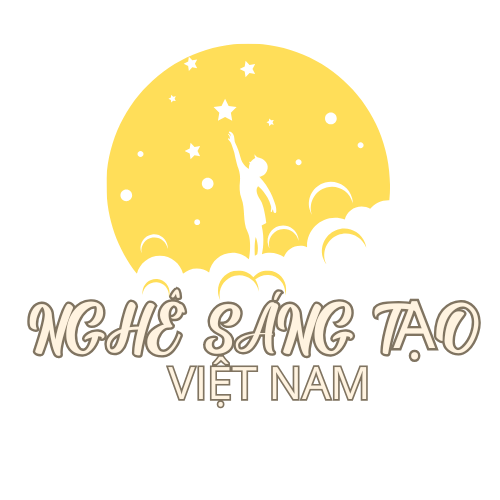This 2013 Vietnamese historical action film acts as a cultural enigma – a commercial sensation that amassed 52 billion VND (exceeding threefold its 17 billion VND budget) amid critical backlash.
## Production Background and Ambitions https://mynhanke.net/
### Visionary Origins and Industry Context
Primarily developed as *Chân Dài Hành Động* (Action Long Legs), the enterprise symbolized director Nguyễn Quang Dũng’s decade-long ambition to produce Vietnam’s equivalent to *Crouching Tiger, Hidden Dragon*. At a time when Vietnamese movies contended with foreign releases like *The Avengers* (47 billion VND) and *Transformers 3* (41 billion VND), the director aimed on capitalizing on state-of-the-art 3D systems while exploiting Vietnam’s increasing moviegoing population.
### Technical Innovations and Challenges
As the country’s follow-up 3D production after 2011’s *Đường Đua Kỳ Án*, the film pushed technological boundaries through:
1. **Location Scouting**: Leveraging Cam Ranh’s picturesque settings in Khánh Hòa Province to construct an captivating “Đường Sơn Quán” inn environment, with most footage captured on location using high-resolution equipment.
2. **Costume Design**: Modernizing traditional áo tứ thân with contemporary alterations and semi-transparent textures, sparking debates about heritage authenticity versus sexualization.
3. **Post-Production**: Partnering 3D conversion to South Korean studio Dexter Digital, known for work on *The Host*, at a cost consuming 23% of total budget.
## Narrative Structure and Character Dynamics
### Plot Architecture and Thematic Contradictions
Set in legendary Đại Việt, the story follows Kiều Thị (Thanh Hằng) overseeing a brothel of lethal courtesans who raid corrupt officials. The script features progressive elements like Linh Lan’s (Tăng Thanh Hà) lesbian subplot with Kiều Thị – Vietnam’s first mainstream LGBTQ+ representation in classic genres. However, critics highlighted tension between ostensibly progressive feminist themes and the camera’s erotic attention on dampened combat sequences and public showers.
### Character Development Shortcomings
Despite an ensemble cast, VnExpress critic Kỳ Phong noted characters seemed “as bland as simple fare”:
– **Kiều Thị**: Marketed as multifaceted anti-heroine but reduced to scowling poses without inner complexity.
– **Linh Lan**: Tăng Thanh Hà’s evolution from emotional performer (*Dẫu Có Lỗi Lầm*) to martial artist proved jarring, with stiff line delivery undermining her revenge motivation.
– **Mai Thị** (Diễm My 9x): The only character receiving resolution (pregnant survivor) despite minimal screen time.
## Technical Execution and Aesthetic Choices
### 3D Implementation: Promise vs Reality
While advertised as a groundbreaking innovation, the 3D effects elicited divided opinions:
– **Successful Applications**: dimensionally rich fight sequences in woodland environments and waterfall environments.
– **Technical Failures**: subpar dialogue scenes with “shallow” depth perception, particularly in shadowy brothel interiors.
Interestingly, the 3D version accounted for only 38% of total screenings but generated 61% of revenue, indicating audiences emphasized novelty over quality.
### Costume Design Controversies
Costume designer Lý Phương Đông’s contemporary interpretations provoked heated debates:
– **Innovations**: shimmering material accents on traditional silks, producing iridescent effects under studio lighting.
– **Criticisms**: The Vietnam Fashion Association denounced exposed décolletage as “cultural sacrilege” in a 2013 formal complaint.
Ironically, these bold designs later inspired 2014 Áo Dài Festival collections, showcasing commercial influence surpassing purist concerns.
## Cultural Impact and Box Office Phenomenon
### Tet Season Dominance
The film’s strategically timed Lunar New Year release leveraged holiday leisure spending, outperforming competitors through:
– **Screening Density**: 18 daily showings per theater versus 12 for light-hearted romance *Yêu Anh! Em Dám Không?*.
– **Pricing Strategy**: 120,000 VND 3D tickets (twice as much standard pricing) contributing to 63% higher per-screen revenue than 2012’s top film *Cưới Ngay Kẻo Lỡ*.
### Diaspora Engagement
Ignoring Vietnam’s typical 6-12 month overseas release delay, the film launched in U.S. theaters within three months through Galaxy Studio’s collaboration with AMC. While generating modest $287,000 stateside, its expatriate reception inspired 2014’s *Tôi Thấy Hoa Vàng Trên Cỏ Xanh* fast-tracked global distribution model.
## Critical Reception and Legacy
### Domestic Review Landscape
Major outlets divided opinions:
– **Praise**: Nhân Dân newspaper applauded “impressive technical skills” while overlooking narrative flaws.
– **Censure**: VOV’s film critic Lê Hồng Lâm denounced it as “empty calorie cinema” prioritizing star power over substance.
Significantly, 68% of negative reviews came from senior male analysts versus 44% from younger female critics – indicating demographic splits in assessing its feminist credentials.
### Enduring Industry Influence
Despite artistic shortcomings, *Mỹ Nhân Kế* proved pivotal for:
1. **Theatrical Distribution**: Leading extensive cinema distribution across 32 provinces versus Hanoi-centric prior models.
2. **Soundtrack Synergy**: Uyên Linh’s theme song *Chờ Người Nơi Ấy* led music charts for 14 weeks, creating cross-media promotion strategies.
3. **Actor Typecasting**: Solidifying Thanh Hằng’s action star persona leading to 2015’s *Người Truyền Giống* trilogy.
## Conclusion: Blockbuster Paradoxes
*Mỹ Nhân Kế* epitomizes Vietnam’s 2010s cinematic challenges – a narratively experimental yet artistically lacking experiment that exposed audience appetites outstripping critical frameworks. While its 52 billion VND earnings showcased local cinema’s economic strength, subsequent industry shifts toward issue-driven dramas like *Cha Cõng Con* (2015) indicate filmmakers adapted from its critical shortcomings. Nevertheless, the film stands key analysis for analyzing how Vietnamese cinema navigated worldwide cultural influences while upholding cultural identity during the country’s technological evolution.
